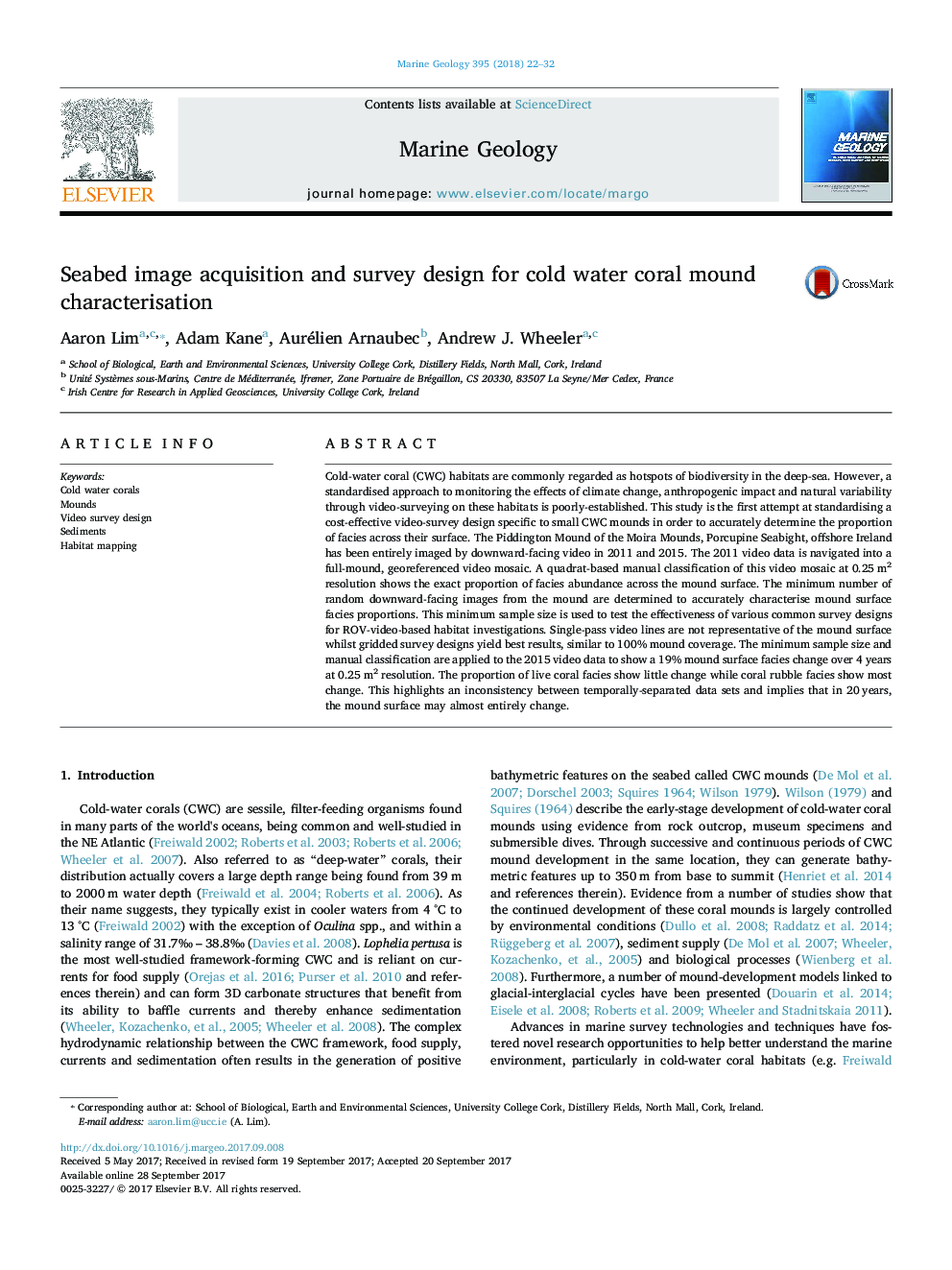| Article ID | Journal | Published Year | Pages | File Type |
|---|---|---|---|---|
| 5784435 | Marine Geology | 2018 | 11 Pages |
Abstract
Cold-water coral (CWC) habitats are commonly regarded as hotspots of biodiversity in the deep-sea. However, a standardised approach to monitoring the effects of climate change, anthropogenic impact and natural variability through video-surveying on these habitats is poorly-established. This study is the first attempt at standardising a cost-effective video-survey design specific to small CWC mounds in order to accurately determine the proportion of facies across their surface. The Piddington Mound of the Moira Mounds, Porcupine Seabight, offshore Ireland has been entirely imaged by downward-facing video in 2011 and 2015. The 2011 video data is navigated into a full-mound, georeferenced video mosaic. A quadrat-based manual classification of this video mosaic at 0.25Â m2 resolution shows the exact proportion of facies abundance across the mound surface. The minimum number of random downward-facing images from the mound are determined to accurately characterise mound surface facies proportions. This minimum sample size is used to test the effectiveness of various common survey designs for ROV-video-based habitat investigations. Single-pass video lines are not representative of the mound surface whilst gridded survey designs yield best results, similar to 100% mound coverage. The minimum sample size and manual classification are applied to the 2015 video data to show a 19% mound surface facies change over 4Â years at 0.25Â m2 resolution. The proportion of live coral facies show little change while coral rubble facies show most change. This highlights an inconsistency between temporally-separated data sets and implies that in 20Â years, the mound surface may almost entirely change.
Related Topics
Physical Sciences and Engineering
Earth and Planetary Sciences
Geochemistry and Petrology
Authors
Aaron Lim, Adam Kane, Aurélien Arnaubec, Andrew J. Wheeler,
